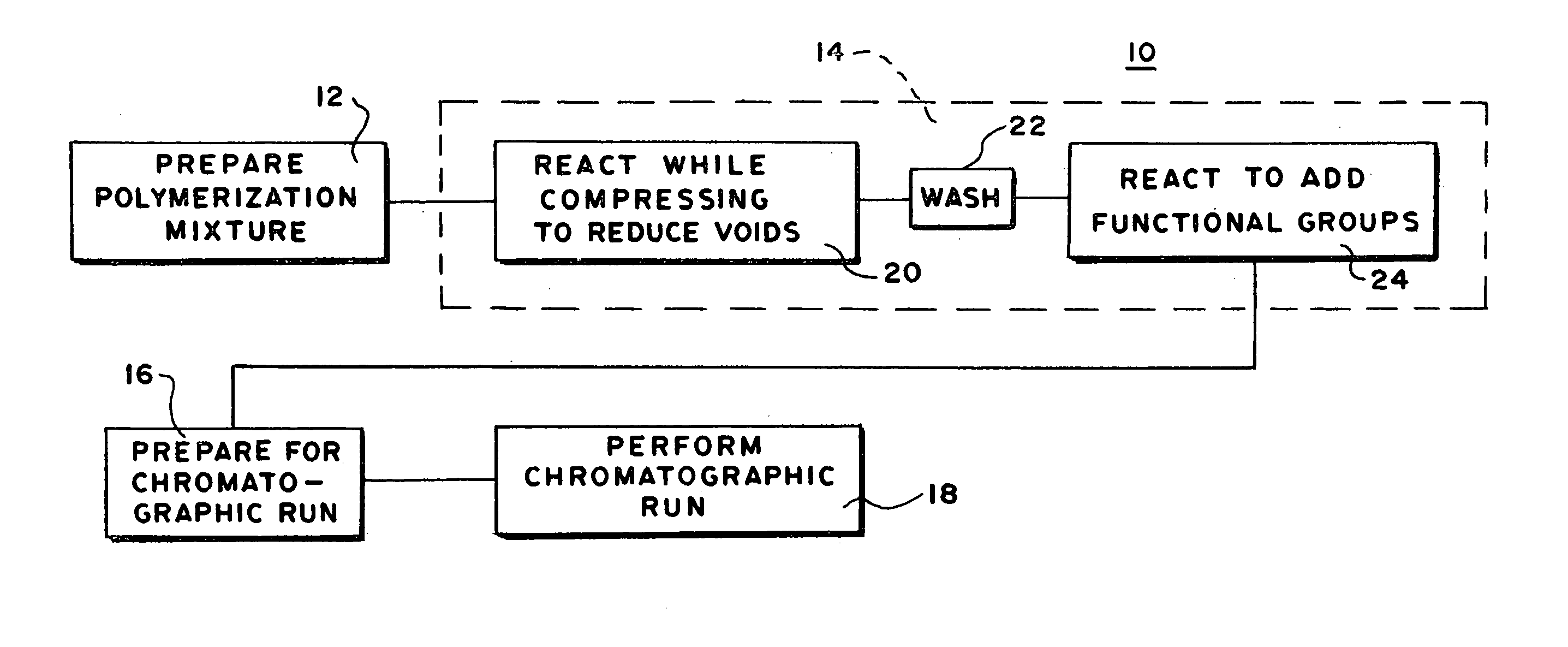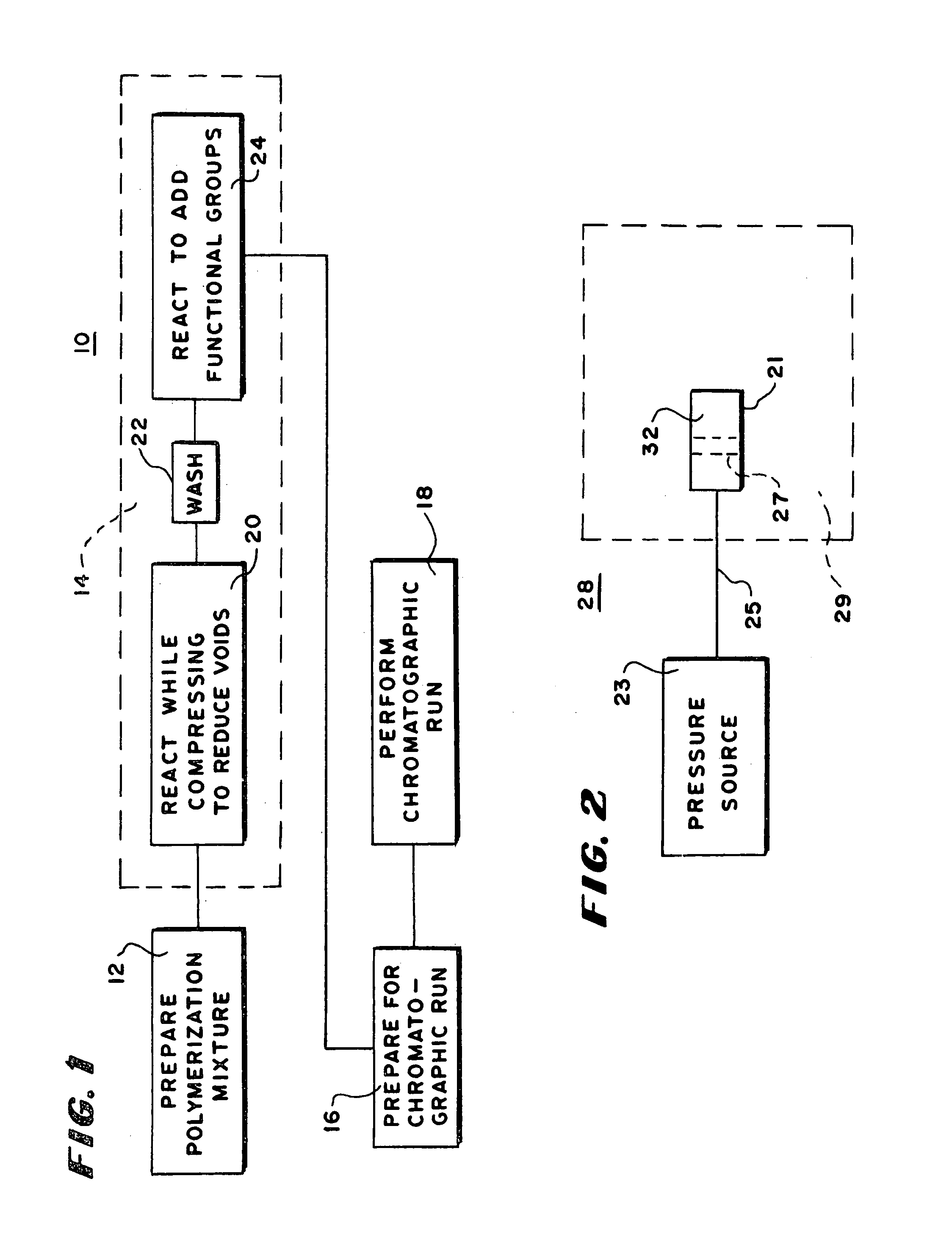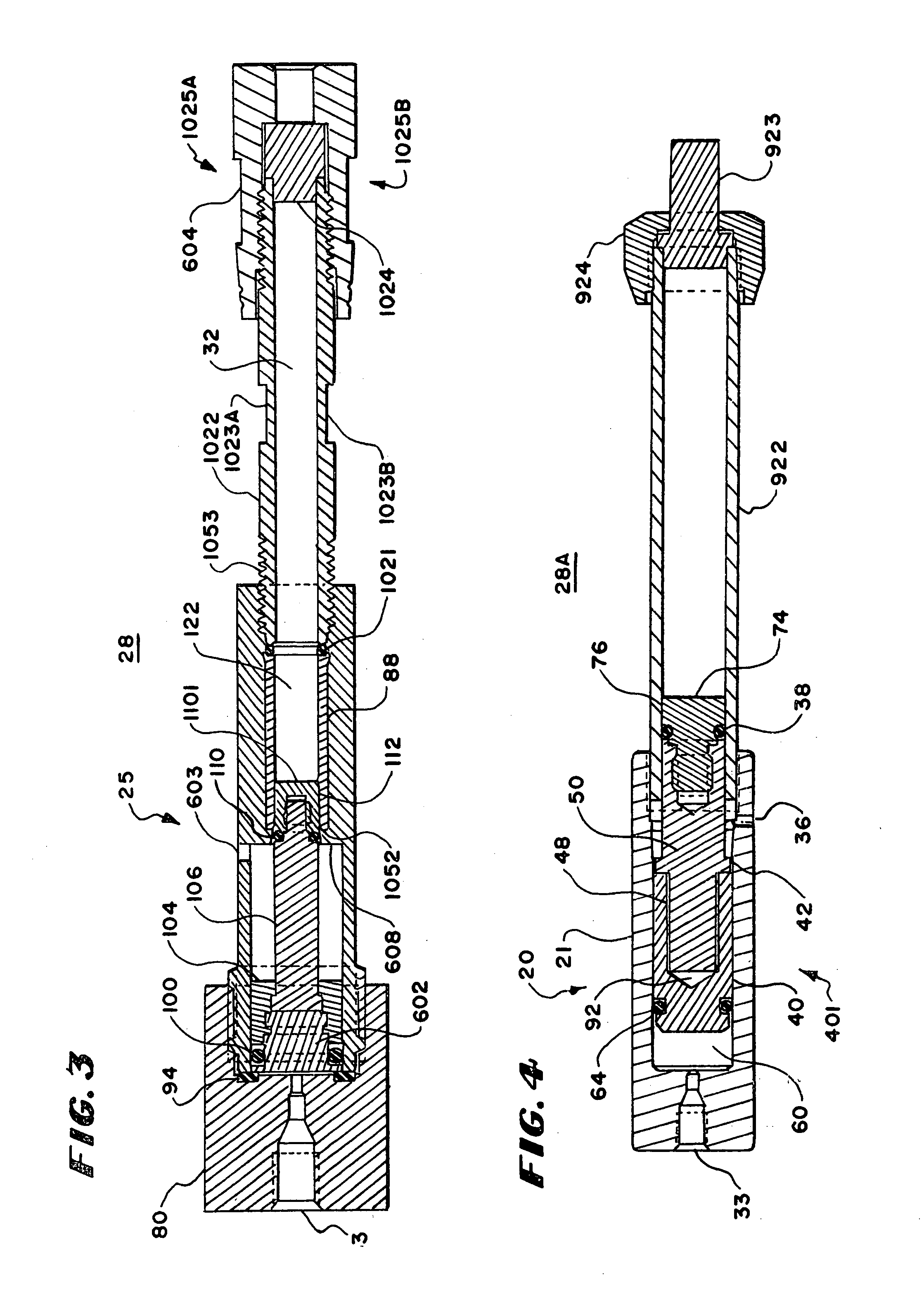Separation system, components of a separation system and methods of making and using them
a separation system and separation system technology, applied in the field of separation systems and components, to achieve the effect of increasing the homogen increasing the uniformity of particle size, and increasing the size distribution and uniformity of separation effective openings throughout the polymer
- Summary
- Abstract
- Description
- Claims
- Application Information
AI Technical Summary
Benefits of technology
Problems solved by technology
Method used
Image
Examples
example 1
[0258]A polymerization solution was prepared as following: Weighed 1.2 g of glycidyl methacrylate (GMA), 0.80 g of ethylene dimethacrylate (EDMA) (polymerization mixture 1) and 0.02 g of 2,2=-azobisisobutyronitrile (AIBN) into a 20 ml sample vial and shook the mixture gently until it became a homogeneous solution; Weighed 2.55 g of cyclohexanol (CHOH) and 0.45 g of dodecanol (DODOH) into this solution and shook it until it is homogeneous. The polymerization mixture was degassed as in Degassing Procedure.
[0259]An empty stainless steel column (4.6 mm inner i.d. and 50 mm length), one end of which was sealed by a pressuring device shown in FIG. 4, was filled with this solution until the column is full. A PEEK-plug contained in the stainless steel screw cap, which was the original cap for the column shown in the same figure, was used to seal the other end of the column. The device of FIG. 3 was connected to a syringe pump. Water was used as the medium to generate the pressure of 120 psi...
example 2
[0271]A polymerization solution was prepared as Example 1 with the following polymerization solution: 2.0 g GMA, 2.5 g 2-(acryloyloxyethyl)trimethylammonium methyl sulfate (ATMS, 80%), 6.0 g EDMA, 7.5 g 1,4-butanediol, 6.75 g propanol, 0.75 g water and 0.1 g AIBN.
[0272]An empty glass column (10 mm inner i.d. and 100 mm length), one end of which was sealed by a pressuring device shown in FIG. 4, was filled with this solution until the column is full. A TEFLON-plug contained in the PEEK screw cap shown in the same figure, was used to seal the other end of the column. The device of FIG. 4 was connected to a syringe pump. No air was inside the column. This column was placed into a water bath upright at 60?C and kept for 15 minutes. Then the column was pressurized to 120 psi by syringe pump using water as the medium, and kept for 20 hours. After polymerization, the column was taken out of the water bath and cooled to room temperature.
[0273]The device of FIG. 4 was detached from the syrin...
example 3
[0282]Two columns were prepared as in Example 1 and 2 with the following solution: 17.5 g DVB, 19.8 g tetra(ethylene glycol), 10.2 g tetra(ethylene glycol) dimethyl ether, and 0.18 g AIBN. After wash with acetonitrile, the column was further washed with 20 bed volume of water at the flow rate of 16 ml / min. The manually positioned pistons in both ends were compressed into the column. This column was then washed with acetonitrile containing 0.15% trifluoroacetic acid and characterized by LC characterization method 1a and 1b. The resolutions of these columns for both protein and peptide separation were improved greatly over the columns made in the Comparative Examples. The capacities were more than 5 times higher. The back pressures of these columns were low. High resolutions were achieved with the mobile phase gradient starting from 100% water containing 0.15% TFA. No wall effect was found in these columns. The proteins and peptides pre-eluted out of the column in the columns from Com...
PUM
| Property | Measurement | Unit |
|---|---|---|
| Size | aaaaa | aaaaa |
| Radius | aaaaa | aaaaa |
| Temperature | aaaaa | aaaaa |
Abstract
Description
Claims
Application Information
 Login to View More
Login to View More - R&D
- Intellectual Property
- Life Sciences
- Materials
- Tech Scout
- Unparalleled Data Quality
- Higher Quality Content
- 60% Fewer Hallucinations
Browse by: Latest US Patents, China's latest patents, Technical Efficacy Thesaurus, Application Domain, Technology Topic, Popular Technical Reports.
© 2025 PatSnap. All rights reserved.Legal|Privacy policy|Modern Slavery Act Transparency Statement|Sitemap|About US| Contact US: help@patsnap.com



